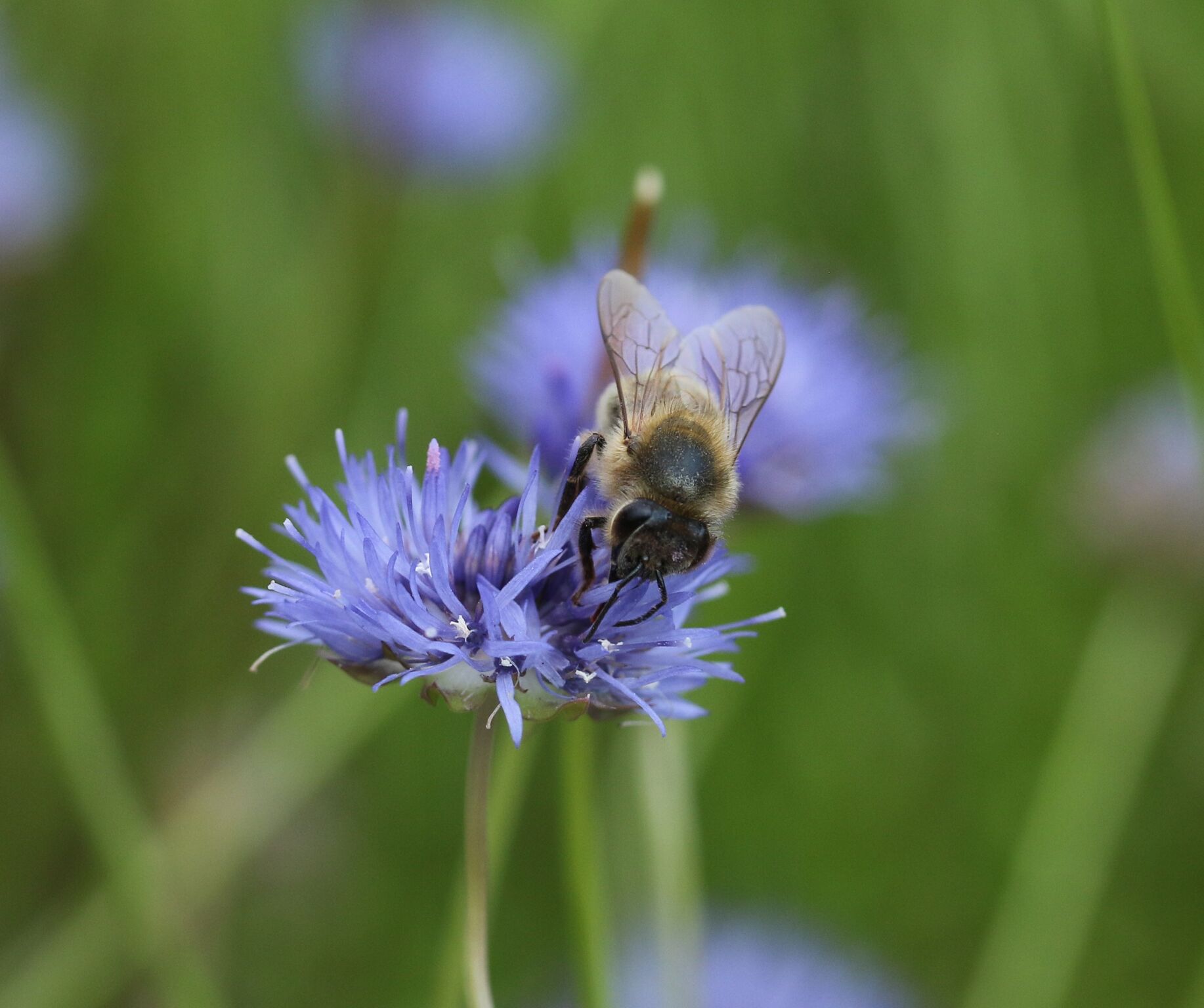Gene conservation for grassland species and varieties
The changes in the management of our cultural landscape have increased rapidly in recent years. This also applies to grassland farming. An ecologically oriented, environmentally friendly, heavily subsidy-dependent mountain agriculture faces the economic pressure for intensification and economic optimization in the intensive grassland production areas. The unbroken trend towards increasing cutting frequency and grazing intensity - short-grass pasture has now also penetrated the Alpine region - is increasingly pushing the permanent grassland stocks in the Alpine region to the limits of their performance. Climate, geology, topography and traditional forms of management have created a variety of different, very species-rich grassland stands. These form the basis for the high biodiversity of plants and animals in the Alpine region. However, the proportion of extensive grassland with natural stands has been declining for decades.
On better sites, cultivation is often intensified, which means that biodiversity declines very quickly. In poorer locations, use is often abandoned, as this is usually associated with reforestation. This leads to a further decline in extensive grassland. The protection, preservation and sustainable use of these genetic resources of extensive grassland is therefore an essential task. Maintaining genetic diversity within species is an important contribution to maintaining the biodiversity of these plant communities. In view of Austria's very different climate zones and the variety of location and management factors, it is important to record, sift and secure the resulting genetic diversity. However, this goal will not be achievable through in situ conservation measures alone. There are now ways to not only protect such valuable habitats, but also to reintegrate them into our cultural landscape.
Crop production alternatives - arable crops
Until the last century, agriculture was widespread in the inner Alpine regions. In addition to potatoes, various types of grain were also grown for human and livestock nutrition. In recent years, the cultivation of these crops on a small scale has often experienced a renaissance as companies specialize in these niche products and sell the products via high-quality channels or direct marketing strategies.
Plant-growing alternatives - special crops
Our focus in this area is fruit and viticulture. Due to the steep slopes that are often exposed to the south, enormous erosion damage can occur if there is a lack of ground cover. Permanent greenery adapted to the location improves the accessibility of the facilities, the soil structure and biological activity in the soil and is of course an important erosion protection measure. What is crucial is the right seed mix, so that e.g. B. on steep slopes the greenery does not become slippery when wet or there is no competition for water and nutrients on dry sites. In practice, these objectives are very often not achieved. The question of whether poor use of greening technology, a seed mixture that is not suitable for the location, climate and farming conditions, or errors in maintaining the greenery are responsible for the failure is usually not so easy to answer. With overseeding devices, such as those developed for planting and reseeding grassland stands, permanent greenery can also be established in fruit cultivation according to the current state of the art. Regular reseeding of such stands helps to close gaps and maintain a high proportion of desired species and varieties in the vegetation, even under heavy stress. Modern greening mixtures are primarily composed of grass and turf varieties. They are resistant to mechanical stress, regenerative, have low biomass production and exert little competition for water and nutrients. If biodiversity is to be increased in addition to the management-relevant properties of the vegetation, various herbs can also be established. However, it is recommended to sow these with a divided seed box between the lanes so as not to damage them when crossing.
Breeding and seed production
In the climatically disadvantaged grassland production areas of Austria, the availability of suitable varieties is limited because international breeders do not serve the Alpine region with their own breeding programs as the market is too small. Due to the lack of commercial forage plant breeding, the HBLFA Raumberg-Gumpenstein started an extensive program for the breeding of grasses and legumes at the end of the 1980s, which is specifically designed to meet the needs of Austrian grassland farming. Over the past 25 years, the HBLFA Raumberg-Gumpenstein has collected, observed and refined material from a wide range of local grassland locations with regard to the desired properties. The Gumpensteiner varieties are propagated domestically and form the basis for many quality seed mixtures, which guarantees propagators good market prices compared to other European countries. At the end of the 1990s, domestic production of fodder seed was around 165 tons, spread over 410 hectares, but the current production volume is at least 700 tons, spread over 1,250 hectares. This means that a self-sufficiency rate of more than 30% can now be assumed in Austria. Since forage plant breeding at the HBLFA Raumberg-Gumpenstein is not profit-oriented and sees its task primarily as a necessary addition to the range of grasses and legumes available in Austria for grassland farming, future activities will remain within this framework.
Quality mixtures for grassland
The most important potential for a grassland and livestock farmer is his meadows, pastures and field fodder. The plant populations of these grassland crops should be grassy, stable in the sward and harmoniously composed of legumes and compatible herbs. The performance and endurance depend largely on the properties of the varieties that are introduced through the seeds during overseeding, reseeding or new planting. Only those who use seed mixtures that are optimally adapted to the characteristics of the climate and location as well as the intended use will be successful with their measures. The composition of seed mixtures for field fodder cultivation and overseeding or reseeding as well as new planting of permanent grassland has also evolved over the years and, in some cases, changed significantly, following the changed recommendations for the professional management of such stands. The art of composing grassland mixtures essentially consists of selecting the most suitable species and combining them in appropriate proportions.









